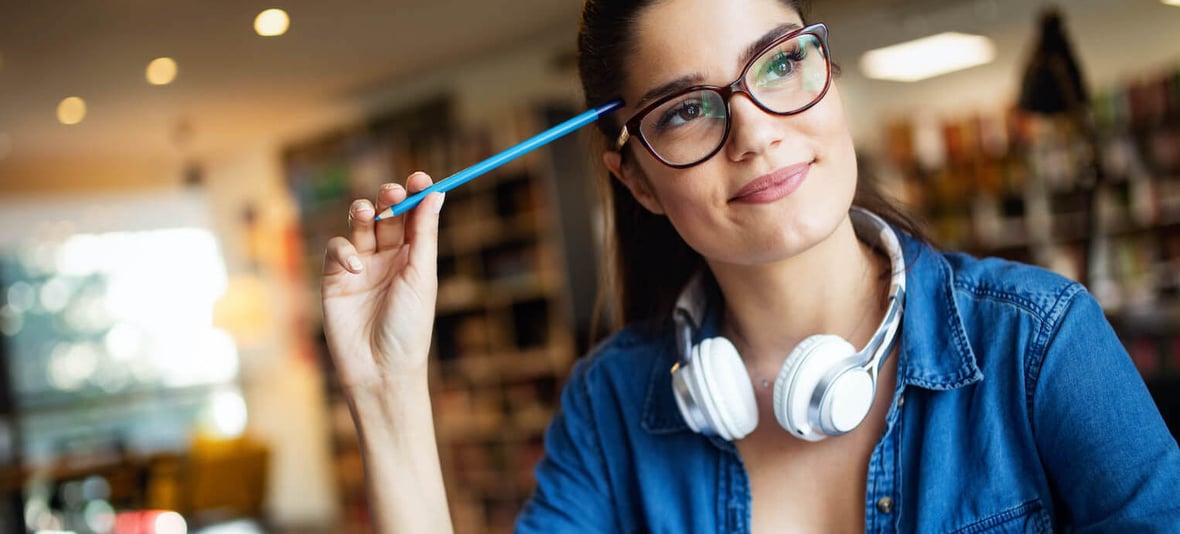
By Catey Miller
At its core, inbound marketing is about creating content people love and sharing it with the world. Who cares if that content actually generates any leads or customers—as long as people are happy, the world is a better place. Right? Wrong ... sort of.
Why Gate Content?
Most inbound marketing professionals really do want to make the world a better place; we’re excited about our products or services, and we want people to know how they can improve their lives. But, no matter how idealistic and well meaning they are, all marketers and salespeople have lead numbers and sales quotas to hit. And to hit those numbers, you need leads.
One tried-and-true method inbound marketers use to generate leads is to gate content. Gated inbound content is still free, and the “gate” should never be a paywall. Instead, the gate usually takes the form of either a landing page or a pop-up modal that asks the visitor to provide some sort of personal information—at a minimum, first name, last name, and email address—in order to access the content.
The content itself can take many forms. However, the most effective use of a gate is to put it in front of premium content: high-quality, in-depth, usually long-form content that is of substantial value to prospects. After all, if a prospect is giving you their information, they probably want something a little more significant than a blog post in return.
If you’re thinking the definition of premium content sounds a bit vague—and that vague definition makes it harder to decide what should be gated or ungated—you’re not alone. Many marketers may already be familiar with the Great Gate Debate, but countless others have spent more time than they’d like to admit wondering just how to tell what content should be gated and what should be freely accessible.
Unfortunately, there’s no one-size-fits-all answer to the question of what or how much to gate. But, with a little careful decision-making, it is possible to find a happy medium between gated and ungated content.
To Gate and Not to Gate
One of the most popular ways to balance gated and ungated content is known as the content pillar approach. Picture an architectural pillar, and you’ve got the basic idea: something sturdy and foundational. Anne Murphy, former director of content at Kapost, defines a content pillar as “a substantive and informative piece of content on a specific topic or theme that can be broken into many derivative sections, pieces, and materials.” E-books, white papers, and similar types of long-form content are examples of pillars.
To go back to the real-life example of architectural pillars, pillars of various sizes usually work together to stabilize or evenly bear the weight of a larger structure. In the marketing content pillar approach, a central pillar piece of gated content like the examples above is supported by lighter-weight, ungated content offers, such as blog posts. Those ungated pieces then can drive traffic to the pillar content, which converts that traffic into leads for your organization (the larger structure—get it?).
Other ungated content offers you could create in support of gated premium offers include:
- Stats, tips, quotes, or ideas shared via social media
- Free preview chapters or sections of e-books
- “Micrographics”—small sections of a larger infographic or small, independent infographics that illustrate just one or two main points
- Blog posts that focus on issues discussed in one section of your premium content offer
- List posts that cover the main issues discussed in your gated content offer at a high level
Additionally, if your gated content includes an asset such as a checklist, table, or worksheet, consider providing either a portion of that smaller asset or the entire thing as an ungated resource.
Feel free to get creative with what ungated content you’ll use to support your premium offer—it’s hard to go wrong. Just remember to always link to the gated offer somewhere on the page where the related ungated content lives. After all, the goal of this ungated content is to funnel people toward your gated lead generation opportunity!
Why Use the Pillar Approach to Balance Gated and Ungated Content?
There are a few big advantages to the content pillar approach.
First, because the original pillar content can easily be broken up into lighter-weight content offers such as blog posts and the like, it’s basically multiple ready-made content offers in one. Beyond repurposing the pillar content itself, you can use the topics covered in the pillar content as inspiration for additional ungated content and save time brainstorming content ideas and doing research.
Second, if you’ve laid everything out just right, a visitor should naturally want to click on or download your gated pillar offer after seeing a related ungated asset. Here’s an example: After reading an (ungated) article about the benefits of learning to make mac and cheese at home during the COVID-19 pandemic, complete with mouthwatering pictures and savory descriptions, my natural next question would be, “OK, where can I get these recipes? Must. Cook. Now.” What better follow-up offer to that blog post than an e-book containing the 10 best mac and cheese recipes?
Third, if you do your homework and choose a topic your personas are interested in, you’re virtually guaranteed to attract the right traffic to your site with your ungated offers, and you can be confident that your gated offer is appealing enough to cause your visitors to click on your CTA. And hey, if you play your cards right—optimize that landing page, for example—your pillar content may even snag you a new lead!
An Example of Gating in the Wild
Wondering what content pillars look like in action? Here’s a real-world example using our own content.
One of our recent e-books, The Smart Guide to Sales Enablement, exists as a gated premium content offer. To promote the guide, our team has written several ungated blog posts on closely related topics, such as Marketing Strategist Jenna Ott’s “How to Close More Deals with Sales Enablement.” In addition to this and other related blog posts, VP of Client Services Amber Kemmis recorded a webinar on the psychology of sales enablement.
Although the webinar could arguably be considered a premium content offer in itself, we instead decided to use it as a traffic generator and asset to funnel people toward the guide. The blog posts and webinar, along with social promotion of these assets, helped drive relevant traffic to the SmartBug® site. After engaging with the ungated content, many of these visitors were hungry for more and followed the CTA to download The Smart Guide to Sales Enablement.
Other Content Considerations
It is important to be thoughtful about what content you should gate or leave ungated and how to structure that content to maximize your lead generation. But if the content itself doesn’t appeal to your buyer personas, the best pillar approach in the world won’t do you any good.
Can you name examples of your organization using a mix of gated and ungated content for each of your buyer personas? If you’re not sure, we’re here to help. Learn about how to map your content—existing or yet to be written, gated or ungated—to your personas at each stage of their Buyer’s Journeys in our free guide, Mapping Content for Different Buyer Personas.
About the author
Catey Miller is a Senior Copyeditor based in Wilmington, NC. She has a BFA and an MFA in creative writing and writes YA fiction when she's not copy editing. She worked as a freelance editor for SmartBug Media starting in Nov. 2017 and was promoted to senior editor in March 2019, and she is happy to bring her editorial expertise to the world of Intelligent Inbound marketing. Read more articles by Catey Miller.








